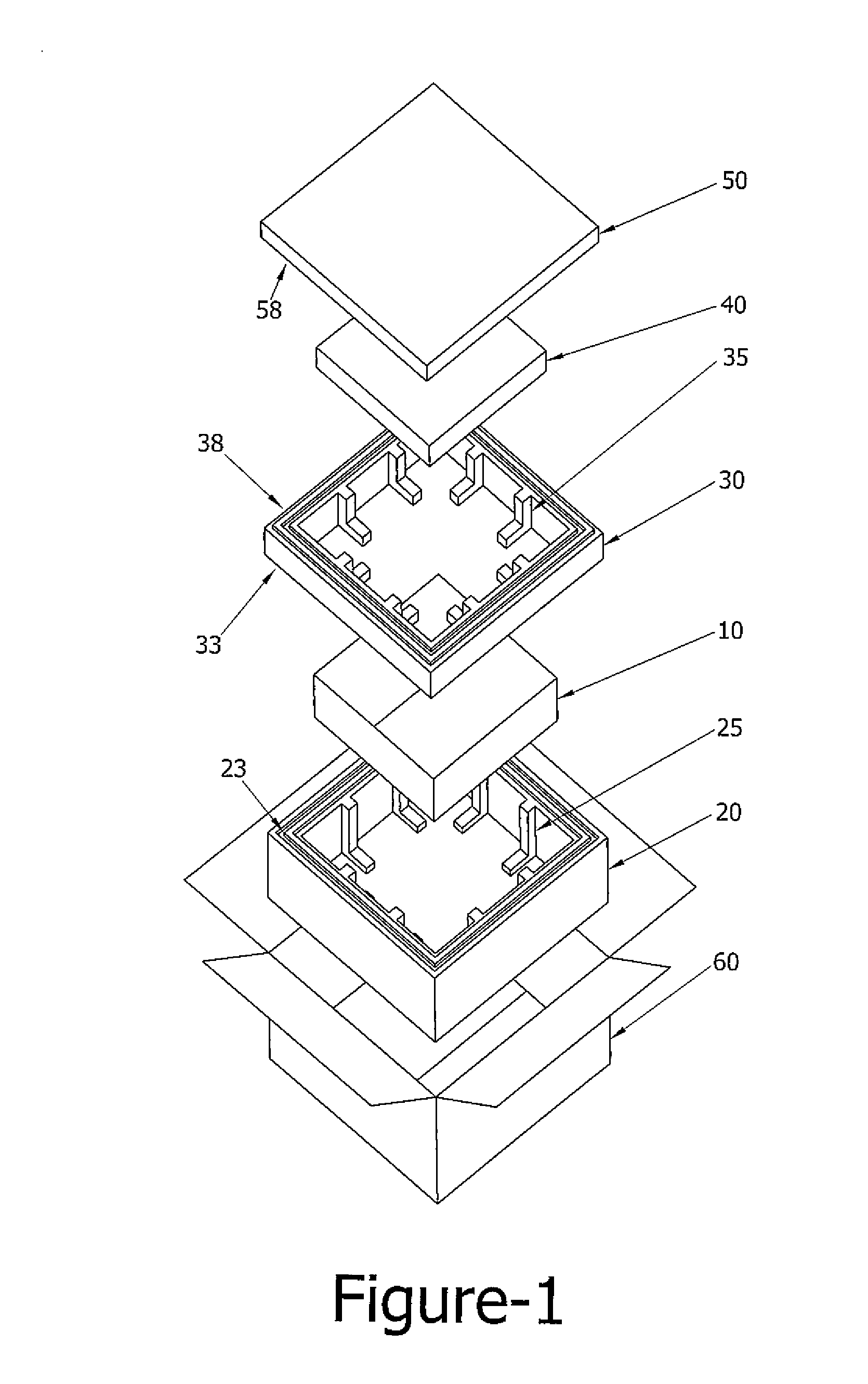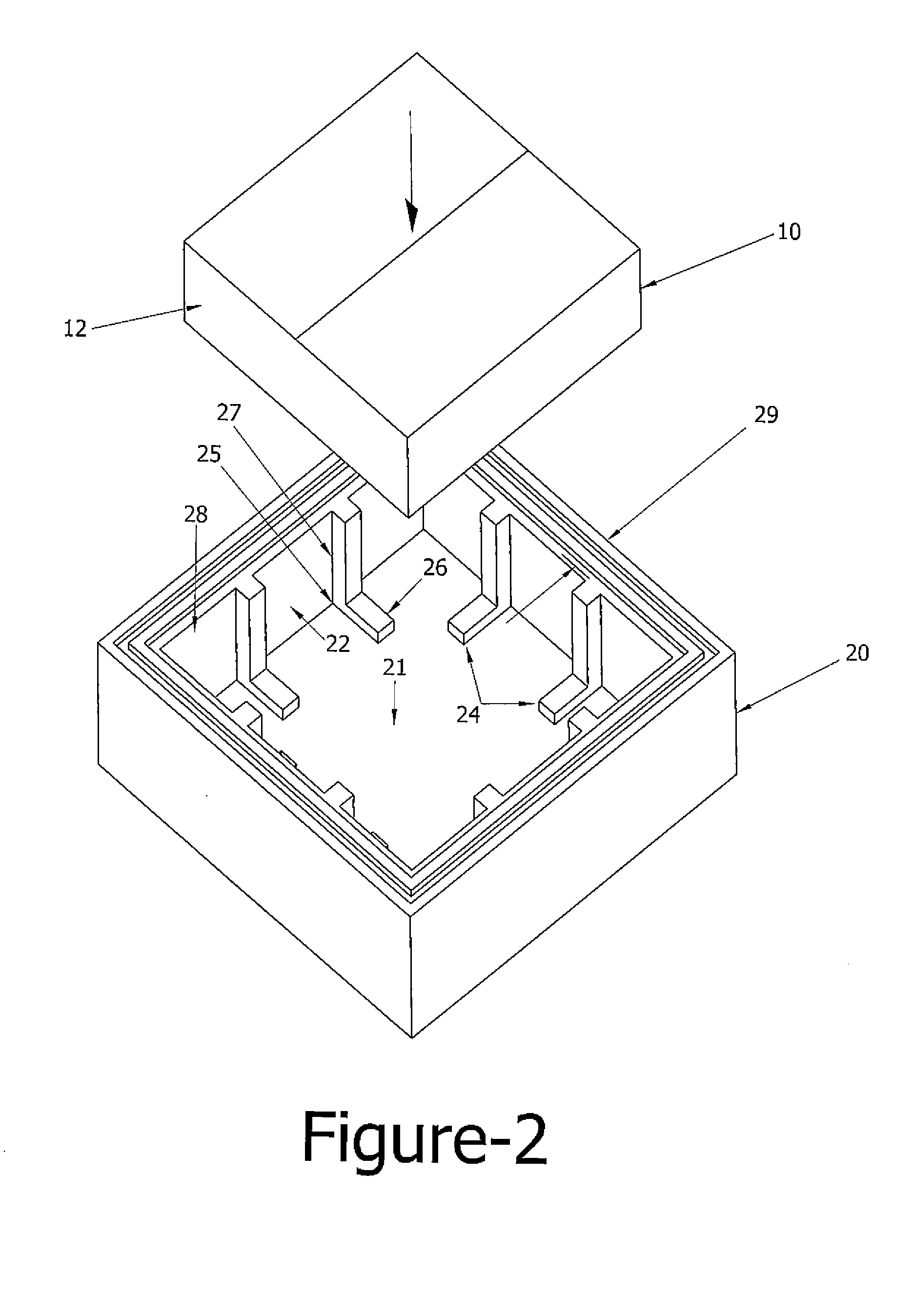Insulated shipping container systems and methods thereof
a shipping container and insulated technology, applied in the field of shipping containers, can solve the problems of limited cooling capacity, costly upgrades to the container system, and the inability to keep payloads cool, so as to reduce the risk of failure, increase the minimum operating temperature of refrigerant, and increase the cooling efficiency
- Summary
- Abstract
- Description
- Claims
- Application Information
AI Technical Summary
Benefits of technology
Problems solved by technology
Method used
Image
Examples
Embodiment Construction
will be best understood when read in reference to the accompanying figures wherein:
[0021]FIG. 1 is an exploded perspective view of one of the preferred embodiments of the container system;
[0022]FIG. 2 is an exploded view of the base container and payload of a preferred embodiment;
[0023]FIG. 3 is an exploded view of the base container, payload, and refrigerant collar of a preferred embodiment;
[0024]FIG. 4 is an perspective view of a preferred embodiment wherein the base container, payload, and refrigerant collars have been assembled and includes a view of the refrigerant being assembled into the refrigerant collar;
[0025]FIG. 5 is a perspective view of a preferred embodiment wherein the lid is being placed onto the assembled components of the container system;
[0026]FIG. 6 is a perspective view showing a preferred embodiment wherein the assembled components are enclosed with a closure carton;
[0027]FIG. 7 is a perspective view of a preferred embodiment fully assembled;
[0028]FIG. 8 is a ...
PUM
 Login to View More
Login to View More Abstract
Description
Claims
Application Information
 Login to View More
Login to View More - R&D
- Intellectual Property
- Life Sciences
- Materials
- Tech Scout
- Unparalleled Data Quality
- Higher Quality Content
- 60% Fewer Hallucinations
Browse by: Latest US Patents, China's latest patents, Technical Efficacy Thesaurus, Application Domain, Technology Topic, Popular Technical Reports.
© 2025 PatSnap. All rights reserved.Legal|Privacy policy|Modern Slavery Act Transparency Statement|Sitemap|About US| Contact US: help@patsnap.com



